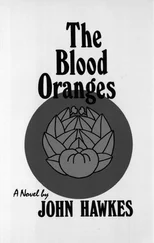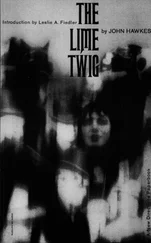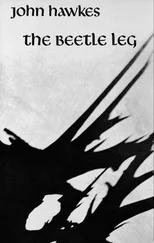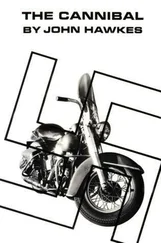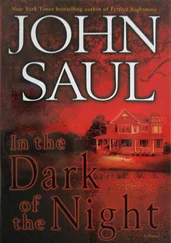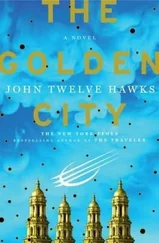Maya’s OR-IF identification had taken years to prepare. When she was nine years old, Thorn had obtained the birth certificates for several dead children. All of their “lives” were tended like fruit trees that needed to be occasionally pruned and watered. On paper, the girls had taken their O-levels and received driver’s licenses, started jobs, and applied for credit cards. Maya had kept the documentation current even during the period that she was living on the Grid and trying to act like a citizen.
When the British government introduced biometric ID cards, the physical data embedded in the e-passports had to match each false identity. Maya had bought special contact lenses that would allow her to handle the airport iris scanners, along with the fragile plastic finger shields that would cover her index fingers. Some of her passports had photographs with her regular face, while others displayed photographs taken after facer drugs changed her appearance.
Over the years, she had started to regard each passport as a different aspect of her own personality. Her false passport as Judith Strand made her feel like an ambitious professional woman. The passport she was taking to Italy used the name of a dead girl from Brighton named Rebecca Green. Maya had decided that Rebecca was an artistic type who liked electronic music.
IT WAS TOO dangerous to take a gun on a plane-even in checked luggage-so Maya left her revolver in the locker and carried Gabriel’s talisman sword, along with a stiletto and a throwing knife. All three weapons were hidden inside the steel framework of a folding baby stroller that had been built several years ago by one of her father’s Spanish contacts.
From Da Vinci airport, she took a taxi into Rome. The heart of Rome could be contained within a triangle set beside the Tiber River. At the base of the triangle were the familiar tourist sites of the Forum and the Coliseum. Maya checked into a hotel near the northern tip of the triangle, close to the Piazza del Popolo. She strapped the knives to her arms and walked south past the mausoleum of Emperor Augustus to the cobblestone streets of the old city.
The ground floors of the eighteenth-century buildings had been taken over by tourist restaurants and upscale boutiques. Bored salesgirls wearing tight skirts stood outside the little shops and chattered to boyfriends on their cell phones. Avoiding the surveillance cameras around the Parliament building, she entered the square that contained the Pantheon. The huge brick-and-marble building was built by the Emperor Hadrian to be the temple of all the gods. It had stood at the center of Rome for two thousand years.
Maya passed through the granite columns of the portico. The nervous energy that came from the groups of tourists and their guides dissipated in the domed space. They whispered as they crossed the marble floor and examined Raphael’s tomb. Standing in the middle of the huge temple, Maya tried to come up with a plan. What was she going to say when she met Lumbroso? Could he possibly know some way to rescue Gabriel?
Something passed through the air and she gazed upward at the oculus-the round opening at the top of the dome. A gray dove was trapped inside the temple and was trying to escape. Desperately flapping its wings, the bird rose through the air in a tight spiral. But the oculus was too far away, and the dove always gave up a few yards from freedom. Maya could see that the dove was getting tired. Each new attempt brought another failure and it kept drifting lower-pulled down by the weight of its exhausted body. The bird was so frightened and desperate that all it could do was keep flying, as if the motion itself would provide a solution.
The feeling of certainty that had come to her in London seemed to melt away. Feeling weak and foolish, she left the temple and hurried down the street to the crowds that were boarding buses and trolleys near the Teatro Argentino. Maya circled the ruins at the center of the square and entered the maze of narrow streets that used to be the Jewish ghetto.
The ghetto had once been like East London in the Victorian era-a refuge where fugitives could hide and find allies. Jews had lived in Rome since the second century B.C., but in the sixteenth century they were forced to live inside the walled area near the old fish market. Even the Jewish physicians who treated Italian aristocrats could leave the ghetto only during daytime. Every Sunday, Jewish children were forced to attend a sermon at the Church of Saint Angelo in Pescheria, where a friar told them they were damned to hell. The church was still standing, along with a large white synagogue that looked like a belle epoque museum plucked out of the center of Paris.
Simon Lumbroso lived in a two-story building near the ruins of the Portico of Octavia. His name was on a brass plate near the door along with a description of his services in Italian, German, French, Hebrew, and English: SIMON LUMBROSO/ART APPRAISAL/CERTIFICATION PROVIDED .
Maya pressed the black button for the doorbell, but no one answered. When she tried again, a man’s voice came from the speaker in the wall. “Buon giorno.”
“Good afternoon. I’m looking for Mr. Lumbroso.”
“And for what reason?” The voice-once warm and friendly-had a sharp, critical tone.
“I’m thinking about buying a certain object and I want to know how old it is.”
“I’m looking at you on my video screen and I don’t see any statues or paintings.”
“It’s jewelry. A gold brooch.”
“Of course. Beautiful jewelry for una donna bella .”
The lock buzzed open and Maya entered the building. The ground floor consisted of two connecting rooms that led to an enclosed courtyard. The apartment looked as if the contents of a scientific laboratory and an art gallery had been loaded into a truck and then dumped into the same space. In the front room, Maya saw a spectroscope, a centrifuge, and a microscope on various tables along with bronze statues and old paintings.
She stepped around some antique furniture and entered the back room, where a bearded man in his seventies sat at a workbench examining a piece of parchment with illuminated letters. The man wore black pants, a long-sleeved white shirt, and a black skullcap. Like many Orthodox Jews, he showed the white fringe from his tallit katan : a linen garment similar to a poncho worn beneath his shirt.
The man gestured to the page on his workbench. “The parchment is old, probably cut from a Bible, but the inscription is modern. For ink, the medieval monks used soot, crushed seashells-even their own blood. They couldn’t drive over to the store and buy products from the petrochemical industry.”
“You’re Simon Lumbroso?”
“You sound skeptical. I do have business cards, but I keep losing them.” Lumbroso slipped on a pair of eyeglasses with thick lenses that magnified his dark brown eyes. “Names are fragile these days. Some people change names like pairs of shoes. And what’s your name, signorina?”
“I’m Rebecca Green, from London. I left the brooch back at my hotel, but perhaps I could draw you a sketch that shows you what it looks like.”
Lumbroso smiled and shook his head. “I’m afraid I’ll need the actual item. If there’s a stone, I can remove it and look for a patina in the setting.”
“Loan me some paper. Maybe you’ll recognize the design.”
Looking skeptical, Lumbroso handed her a pad of paper and a felt-tipped pen. “As you wish, signorina.”
Quickly, Maya drew the Harlequin lute. She tore off the page and placed it on the workbench. Simon Lumbroso glanced at the oval with the three lines, then turned slightly and studied her face. Maya felt as if she were an art object that had been brought to his house for evaluation. “Yes, of course. I recognize the design. If you allow me, perhaps I could give some more information.”
Читать дальше


